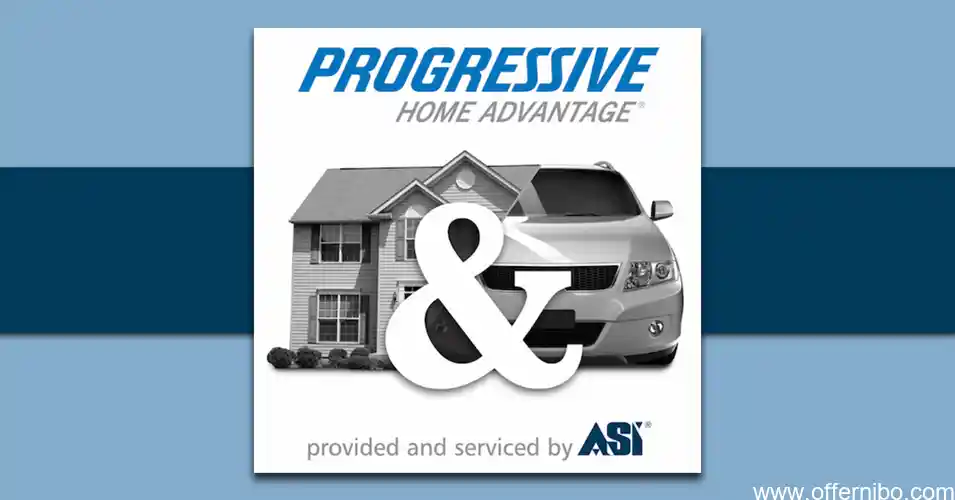Navigating the intricate landscape of auto and home insurance can be a daunting task, but it’s crucial to safeguard your assets and protect yourself from unforeseen circumstances. As you embark on this journey, consider these key considerations and delve into the intricacies of insurance policies to make informed decisions that align with your unique needs.Understanding your insurance requirements is paramount. Determine the extent of coverage you need for your vehicles and residence, considering your specific risks and lifestyle. Evaluate your risk tolerance to strike a balance between comprehensive protection and affordability.To compare insurance quotes effectively, you must grasp the underlying factors that influence premium calculations. Policy coverage limits, deductibles, and premiums play a pivotal role in determining the cost of your insurance. Additionally, explore discounts and benefits offered by different providers to maximize value.Insurance riders can enhance your coverage and provide specialized protection. Familiarize yourself with common types of riders, such as roadside assistance or earthquake coverage, and understand the scope of coverage they provide. Equally important is comprehending any coverage exclusions to avoid potential gaps in your insurance protection.Tailoring insurance to your individual needs is essential. Factors like your driving record, claims history, and property characteristics influence insurance costs. By understanding your risk profile, you can optimize your coverage and minimize premiums.Finally, maximize value and minimize insurance costs through smart savings strategies. Bundling policies, negotiating with insurance providers, and leveraging discounts and incentives can help you save money without sacrificing coverage. By following these expert tips, you can navigate the complexities of auto and home insurance, ensuring your assets are protected while maximizing value and minimizing financial burden.
What are the Key Considerations for Auto and Home Insurance?

When it comes to securing your most valuable assets, like your home and vehicles, understanding the intricacies of auto and home insurance is crucial. Navigating the insurance landscape can be overwhelming, but it doesn’t have to be. By carefully considering your coverage needs and risk tolerance, you can ensure you’re adequately protected without overpaying. Whether you’re a first-time homeowner or a seasoned insurance policyholder, grasping the key considerations for auto and home insurance will empower you to make informed decisions and safeguard your financial well-being.
Evaluating your coverage needs
In the realm of insurance, understanding your unique requirements and tolerance for risk is paramount. Just as a tailor meticulously crafts a suit to fit your physique, your insurance coverage should seamlessly align with your lifestyle and financial circumstances. So, take the time to carefully examine your current situation, identify potential risks, and determine an appropriate level of protection. By doing so, you’ll lay the foundation for a comprehensive and tailored insurance plan that safeguards your assets and provides peace of mind.
Determining your risk tolerance
Navigating the world of insurance can be akin to navigating a maze, with a myriad of choices and considerations that can leave you feeling bewildered. When it comes to auto and home insurance, understanding your unique needs and risk tolerance is paramount. Take the time to evaluate your current coverage and identify any areas where it may fall short. Determine your risk appetite and willingness to assume financial responsibility in the event of an incident. By carefully considering these key factors, you’ll lay the foundation for selecting the optimal insurance plan that aligns with your individual circumstances and provides peace of mind. Remember, understanding these considerations is like having a map that will guide you through the maze of insurance options, enabling you to make informed decisions that safeguard your most valuable assets.
How to Compare Insurance Quotes: Understanding the Factors

Before you sign up for any auto or home insurance policy, it’s crucial to compare quotes from multiple providers to ensure you’re getting the best coverage and value for your money. Understanding the key factors that influence insurance quotes is essential for making informed comparisons. These factors include policy coverage limits, deductibles, premiums, discounts, and benefits. By carefully considering each of these elements, you can determine which insurance provider offers the optimal combination of coverage, cost, and value that aligns with your specific needs and budget.
Policy coverage limits
Shopping for auto and home insurance can be a daunting task, but it doesn’t have to be. By understanding the key factors that influence your insurance quotes, you can make informed decisions and find the best coverage for your needs. First, consider your coverage limits – these determine the amount of financial protection you have in case of an accident or loss. Next, evaluate your deductibles and premiums – these determine how much you pay out of pocket and how much your insurance company covers. Finally, be sure to inquire about any discounts or benefits offered by your provider – these can help you save money on your premiums.
Deductibles and premiums
Shopping for auto and home insurance can be a daunting task, especially with the myriad of options available. Comparing insurance quotes is essential to finding the best coverage at a price that fits your budget. When evaluating quotes, consider the policy coverage limits, deductibles, and premiums. Policy coverage limits determine the maximum amount the insurance company will pay for a covered claim. Deductibles represent the amount you pay out-of-pocket before coverage kicks in, while premiums are the regular payments you make to maintain your policy. By understanding these factors, you can make informed decisions about which policy offers the best value and protection for your specific needs.
Discounts and benefits
When it comes to comparing insurance quotes, there are several key factors to consider. Policy coverage limits are crucial as they determine the extent of protection you have in case of an incident. Deductibles, the amount you pay out of pocket before insurance kicks in, also play a significant role. Premiums, the amount you pay periodically for coverage, should be weighed against the coverage and deductibles offered. Additionally, discounts and benefits, such as multi-policy discounts or loyalty bonuses, can help you save money on your insurance costs. By carefully evaluating these factors, you can ensure you’re getting the best value for your insurance dollar.
Expert Tips: Navigating the Complexities of Insurance Riders

Expert Tips: Navigating the Complexities of Insurance Riders
Insurance riders are add-ons to your standard insurance policy that can provide additional coverage for specific risks or situations. Understanding the complexities of these riders is crucial to ensure your insurance meets your unique needs. Navigating the world of riders can be like traversing a maze filled with hidden paths and potential pitfalls. To help you find your way, let’s delve into common types of riders and highlight the importance of understanding coverage exclusions. By arming yourself with this knowledge, you can confidently navigate the complexities of insurance riders, ensuring your coverage is tailored to safeguard your most valuable assets.
Common types of riders
Navigating the complexities of insurance riders can be akin to traversing a labyrinth, fraught with potential pitfalls. To ensure you emerge victorious, equip yourself with essential knowledge. Educate yourself on the diverse types of riders available, each offering unique enhancements or extensions to your insurance coverage. Moreover, delve into the intricacies of coverage exclusions, as they hold the key to understanding what circumstances may not be covered by your policy. By arming yourself with this knowledge, you empower yourself to make informed decisions, ensuring your insurance policy aligns seamlessly with your specific needs and provides the comprehensive protection you seek.
Importance of understanding coverage exclusions
When it comes to insurance riders, it’s like adding extra toppings to your insurance pizza. These specialized add-ons can enhance your coverage, providing you with peace of mind for specific scenarios or situations. However, it’s crucial to understand the complexities of these riders to ensure they align with your needs. By carefully evaluating the types of riders available and thoroughly grasping any coverage exclusions, you can make informed decisions that tailor your insurance to the unique risks and requirements of your life. Just remember, insurance riders are like a double-edged sword; they can provide extra protection but may also come with additional costs. So, weigh the pros and cons carefully to determine which riders are worth the investment for your customized coverage strategy.
Personalized Coverage: Tailoring Insurance to Your Individual Needs

Understanding your own needs is paramount when navigating the often complex world of insurance. Insurance is meant to provide a financial safety net, protecting you from unexpected events that could potentially cause significant financial strain. By taking the time to tailor your insurance coverage to your specific circumstances, you can ensure that you have the right protection in place, without overpaying for unnecessary coverage. Start by evaluating your current assets, income, and lifestyle to gain a clear understanding of the potential risks you face. Consider your age, health, occupation, and family situation. These factors can all influence your insurance needs. For instance, if you own a home, you may need homeowners insurance to protect your property and belongings. If you have a car, you’ll need auto insurance to comply with state laws and protect yourself financially in case of an accident.
Factors influencing insurance costs
Insurance, much like a tailored suit, should be meticulously designed to fit your unique needs. To achieve this, understanding your risk profile is paramount. Take a moment to assess your lifestyle, assets, and potential vulnerabilities. Are you a frequent traveler with valuable belongings? Do you reside in an area prone to natural disasters? These factors play a pivotal role in determining the extent of coverage you require. Additionally, consider your financial situation and risk tolerance. Are you comfortable with a higher deductible in exchange for lower premiums? By carefully evaluating these aspects, you can craft an insurance policy that safeguards your interests without overextending your budget.
Understanding your risk profile
Understanding how to shop for auto and home insurance can seem like a daunting task, especially when you consider the complexities of tailoring coverage to your individual needs. Just like a puzzle, each piece of your coverage plan contributes to the overall protection you need. Identifying the factors that uniquely influence your insurance costs and comprehending your risk profile are crucial steps in ensuring a personalized policy. By understanding your specific requirements, you can avoid overpaying for unnecessary coverage while also ensuring you have adequate protection in place. It’s essential to take the time to assess your situation and make informed decisions about your insurance needs. Only then can you truly tailor your coverage to fit your unique circumstances, providing peace of mind and financial security down the road.
Smart Savings: Maximizing Value and Minimizing Insurance Costs
Money is the lifeblood of our daily lives and no one likes to waste it. No one likes overpaying for anything, and that includes insurance. Homeowners and auto insurance are essential expenses, but they don’t need to be massive burdens on your budget. The key to finding the right balance between coverage and cost is to learn how to compare quotes. From understanding your needs to negotiating with providers, I’ll show you the strategic secrets of insurance shopping, ensuring you get the protection you need without breaking the bank.
Bundling policies
When it comes to shopping for auto and home insurance, it’s essential to understand your risk tolerance and align your coverage needs with your financial capabilities. This is akin to creating a financial safety net that safeguards your precious assets and provides peace of mind in the face of unforeseen events. By understanding your risk profile, you can tailor your insurance policies to provide optimal protection without overpaying for unnecessary coverage. The key lies in finding the right balance between comprehensive protection and cost-effectiveness.
Negotiating with insurance providers
Maximizing value and minimizing costs in insurance is like juggling plates while balancing on a tightrope – it requires skill, a keen eye, and the ability to keep all the balls in the air. To master this balancing act, you must first comprehend the factors influencing insurance costs, such as your driving record, claim history, and property location. Knowing your risk profile empowers you to make informed decisions and avoid overpaying for unnecessary coverage. Explore bundled policies to consolidate your insurance needs and potentially secure discounts. Remember, your insurance provider is not just a faceless entity – don’t hesitate to negotiate premiums and inquire about available discounts and incentives. By taking an active role in managing your insurance, you can unlock substantial savings and ensure you’re getting the most bang for your buck.
Utilizing discounts and incentives
**Q5. How can I save money on auto and home insurance?**
**Q6. What should I look for when choosing an insurance agent or company?**
**Q4. What factors affect the cost of auto and home insurance?**
**Q5. How can I save money on auto and home insurance?**
**Q6. What should I look for when choosing an insurance agent or company?**
**Q3. How can I compare quotes from different insurance companies?**
**Q4. What factors affect the cost of auto and home insurance?**
**Q5. How can I save money on auto and home insurance?**
**Q6. What should I look for when choosing an insurance agent or company?**
**Q2. What are the different types of auto and home insurance coverage available?**
**Q3. How can I compare quotes from different insurance companies?**
**Q4. What factors affect the cost of auto and home insurance?**
**Q5. How can I save money on auto and home insurance?**
**Q6. What should I look for when choosing an insurance agent or company?**
**Q1. How do I get started shopping for auto and home insurance?**
**Q2. What are the different types of auto and home insurance coverage available?**
**Q3. How can I compare quotes from different insurance companies?**
**Q4. What factors affect the cost of auto and home insurance?**
**Q5. How can I save money on auto and home insurance?**
**Q6. What should I look for when choosing an insurance agent or company?**
For most of us, the cost of insurance can feel like a necessary evil. But there are ways to minimize the hit to your wallet without sacrificing coverage. One smart move is to bundle your policies. By combining your auto and home insurance with the same provider, you can often snag a discount. Another savvy strategy is to negotiate with your insurance company. Don’t be afraid to ask for a better rate, especially if you’ve been a loyal customer for years. Finally, take advantage of any discounts and incentives offered by your insurer. These could include discounts for things like installing security systems, taking defensive driving courses, or maintaining a good credit score. By following these tips, you can maximize the value of your insurance while minimizing the cost.
**Q1. How do I get started shopping for auto and home insurance?**
**Q2. What are the different types of auto and home insurance coverage available?**
**Q3. How can I compare quotes from different insurance companies?**
**Q4. What factors affect the cost of auto and home insurance?**
**Q5. How can I save money on auto and home insurance?**
**Q6. What should I look for when choosing an insurance agent or company?**